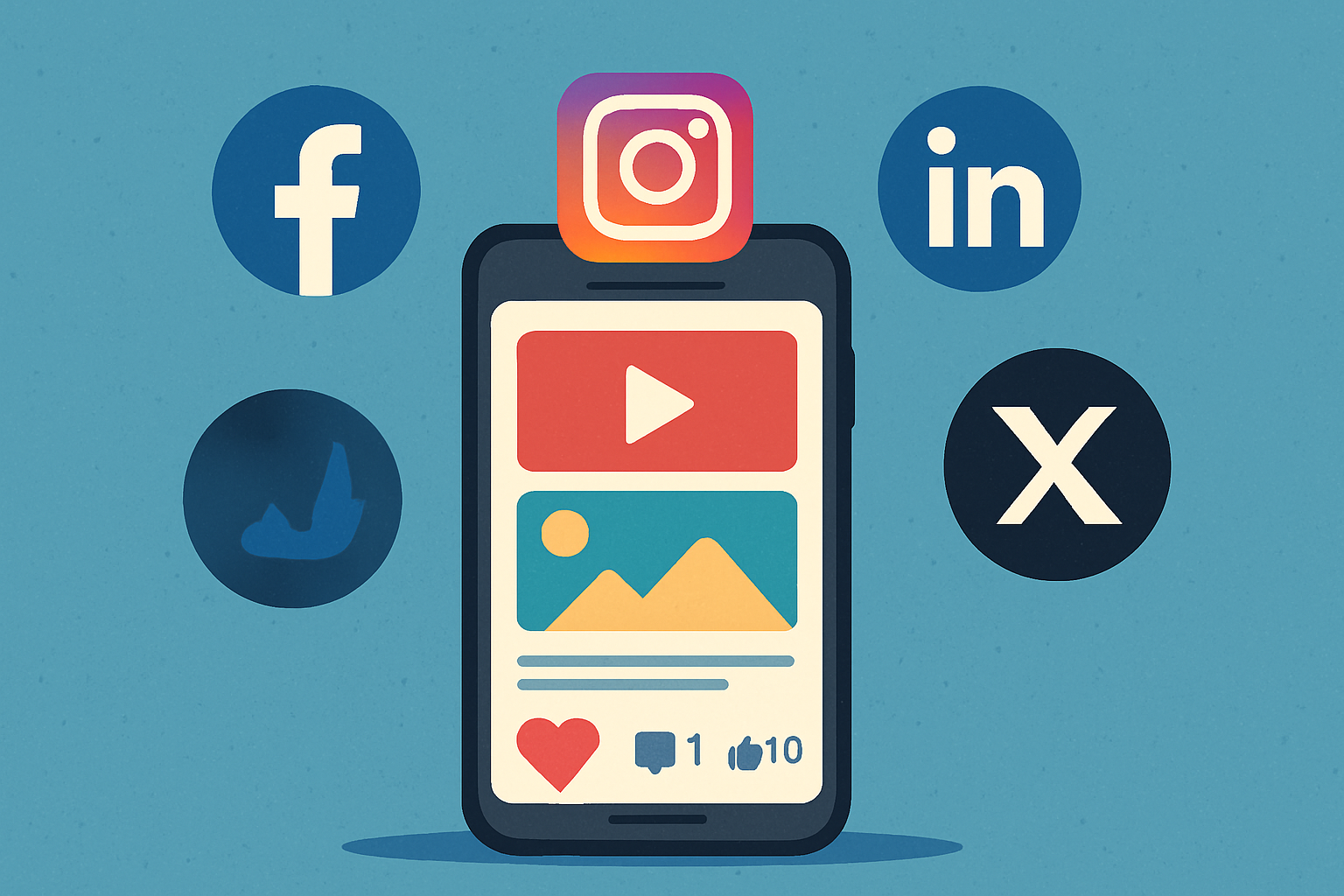In today's hyper-connected world, a strong online presence is no longer a luxury for small businesses; it's a necessity. The digital landscape offers an unparalleled opportunity to reach new customers, build brand loyalty, and ultimately, boost your bottom line. However, with countless strategies and platforms available, navigating the world of digital marketing can feel overwhelming for small business owners. This article will cut through the noise, outlining five essential digital marketing strategies that are not only effective but also highly achievable for businesses with limited resources. By understanding and implementing these core tactics, you can significantly enhance your online visibility, attract your ideal customers, and drive sustainable growth. Whether you're just starting your digital journey or looking to refine your existing efforts, these strategies provide a robust framework for success in the competitive online arena.
Strategy 1: Master Search Engine Optimization (SEO)
Search Engine Optimization (SEO) is the cornerstone of any successful digital marketing strategy. It’s the process of optimizing your website and online content to rank higher in search engine results pages (SERPs) like Google. For small businesses, appearing prominently in local search results can be a game-changer, driving organic traffic directly to your doorstep or website. Effective SEO isn't about tricking search engines; it's about providing valuable, relevant content that genuinely answers user queries and demonstrates your authority in your niche. This involves several key components. Firstly, keyword research is paramount. Identify the terms and phrases your target audience uses when searching for products or services like yours. Tools exist to help you discover high-volume, low-competition keywords that can give you an edge. Secondly, on-page SEO focuses on optimizing individual web pages. This includes crafting compelling title tags and meta descriptions that entice clicks, using your target keywords naturally within your content, and ensuring your website has a clear, logical structure. High-quality, informative content that addresses user intent is crucial here. Thirdly, technical SEO ensures your website is crawlable and indexable by search engines. This means having a fast-loading website, being mobile-friendly, and having a secure (HTTPS) connection. Finally, local SEO is vital for brick-and-mortar businesses. Optimizing your Google My Business profile, gathering positive customer reviews, and ensuring consistent name, address, and phone number (NAP) information across online directories can significantly impact your local search rankings. While SEO is a long-term strategy, the organic traffic and credibility it builds are invaluable for sustainable business growth.

Strategy 2: Harness the Power of Social Media Marketing
Social media platforms have evolved from simple networking sites into powerful marketing channels, offering small businesses an unprecedented opportunity to connect directly with their audience. The key to successful social media marketing lies in understanding your target demographic and choosing the platforms where they spend most of their time. Whether it's Facebook, Instagram, LinkedIn, TikTok, or X (formerly Twitter), each platform offers unique features and audience demographics. Once you’ve identified your core platforms, the focus shifts to creating engaging and valuable content. This isn't just about promotional posts; it's about building a community, sharing insights, and demonstrating your brand's personality. Visual content, such as high-quality images and short videos, tends to perform exceptionally well. Engaging with your audience through comments, messages, and polls fosters a sense of connection and loyalty. Furthermore, social media advertising allows for highly targeted campaigns, enabling you to reach specific demographics based on interests, behaviors, and location. Even with a modest budget, small businesses can leverage these paid options to expand their reach and drive conversions. Consistency in posting, active engagement, and a clear understanding of your brand voice are crucial for building a strong and influential social media presence that translates into tangible business results.

Strategy 3: Build Relationships with Email Marketing
Email marketing remains one of the most effective and cost-efficient digital marketing strategies, boasting an impressive return on investment when executed correctly. For small businesses, it’s a direct line of communication with your most engaged audience: those who have explicitly opted to receive updates from you. The foundation of successful email marketing is building a quality email list. This can be achieved through various methods, such as offering valuable lead magnets (e.g., free e-books, exclusive discounts, or helpful guides) on your website, pop-up forms, or during checkout processes. Once you have a list, the real work begins: crafting compelling and personalized email campaigns. This goes beyond sending generic newsletters. Segmenting your audience based on their interests, purchase history, or engagement levels allows you to send highly relevant content that resonates with each group. Types of emails can include welcome sequences for new subscribers, promotional offers, abandoned cart reminders, educational content, and customer appreciation messages. Automation plays a significant role here, enabling you to set up triggered emails that respond to specific customer actions, saving time and ensuring timely communication. The goal of email marketing is not just to sell, but to nurture relationships, build trust, and establish your brand as a valuable resource. By consistently delivering value to your subscribers, you can foster loyalty, encourage repeat business, and turn casual customers into enthusiastic brand advocates.

Strategy 4: Provide Value Through Content Marketing
Content marketing is about creating and distributing valuable, relevant, and consistent content to attract and retain a clearly defined audience—and, ultimately, to drive profitable customer action. For small businesses, this means becoming a trusted resource in your industry, not just a seller of products or services. The forms of content can vary widely, including blog posts, articles, videos, infographics, podcasts, and case studies. The key is to understand your audience’s pain points, questions, and interests, and then create content that addresses them. For example, a small bakery might create blog posts about baking tips, a video tutorial on decorating cakes, or an infographic on the history of bread. This approach not only helps establish your expertise and credibility but also significantly aids your SEO efforts by providing fresh, keyword-rich content for search engines to crawl. Content marketing is a long-term strategy that builds brand awareness, fosters customer loyalty, and generates leads over time. It’s about providing value upfront, without immediately asking for a sale. By consistently delivering high-quality content, you position your business as an authority, attracting customers who are actively seeking solutions and information. This inbound approach is often more effective and sustainable than traditional outbound marketing, as it draws customers to you rather than you having to chase them. The more valuable content you produce, the more opportunities you create for your target audience to discover, engage with, and ultimately trust your brand.

Strategy 5: Leverage Paid Advertising (PPC)
While organic strategies like SEO and content marketing build long-term visibility, paid advertising, particularly Pay-Per-Click (PPC) campaigns, offers immediate visibility and highly targeted reach. PPC allows small businesses to bid on keywords, placing their ads at the top of search engine results pages or on relevant websites and social media feeds. Platforms like Google Ads and social media advertising (e.g., Facebook Ads, Instagram Ads) provide sophisticated targeting options, enabling you to reach potential customers based on demographics, interests, behaviors, and even their previous interactions with your business. The beauty of PPC is its measurable nature; you only pay when someone clicks on your ad, and you can track every aspect of your campaign, from impressions to conversions. This allows for continuous optimization, ensuring your budget is spent effectively. For small businesses, PPC can be particularly useful for launching new products or services, promoting special offers, or driving traffic during peak seasons. It provides a quick way to get your message in front of a highly qualified audience. However, effective PPC requires careful planning, including thorough keyword research, compelling ad copy, and optimized landing pages. A well-managed PPC campaign can deliver a significant return on investment, complementing your organic efforts and providing a powerful boost to your online presence and sales. It’s about strategically investing in visibility to capture immediate demand and accelerate your business growth.

Conclusion
In the dynamic digital landscape, small businesses have an unprecedented opportunity to thrive and expand their reach. By strategically implementing these five essential digital marketing strategies—mastering SEO, harnessing social media, building relationships through email marketing, providing value with content marketing, and leveraging paid advertising—you can significantly boost your online presence and, more importantly, your bottom line. Remember, digital marketing is not a one-time effort but an ongoing process of learning, adapting, and optimizing. Start with one or two strategies that align best with your business goals and resources, and gradually expand as you gain confidence and see results. The key is consistency, a willingness to experiment, and a deep understanding of your target audience. Embrace the digital revolution, and empower your small business to compete and succeed in today’s interconnected world. The investment in these strategies will not only attract new customers but also foster lasting relationships, ensuring sustainable growth and a prosperous future for your enterprise.


.png)

0 Comments